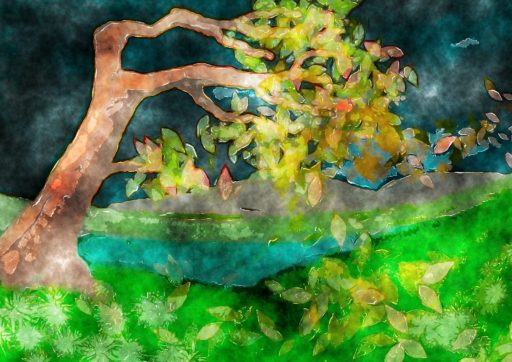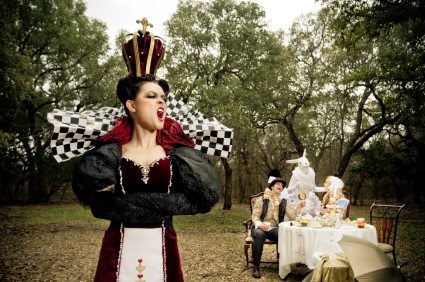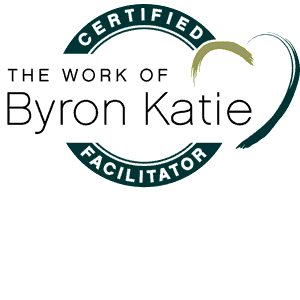Holy Drifting

For me autumn is the holiest of seasons. In the Northern Hemisphere, the days are shorter and the slanted light captures the vibrant riot of colors as the leaves drift downward. I like to drift, too, during this time-out-of-time, as the dark gradually takes over and allows more room for silence, for the coziness and candles and comfort from the growing chill. I celebrate these holy days quietly, allowing time to expand, to create enough space to observe the subtle and slower inner movements that draw me into the coming mystery of the dark time of year.
I store it all up as an antidote for the coming racket and good cheer of conventional holidays. Once the calendar moves through the passage we call Halloween, all that inner focus becomes more difficult. It can take considerable focus to keep the “holy” in the busy-ness of the Holiday Season as it expands to fullness and finally spends itself on New Year’s Eve, two months later.
I spent the last couple days in the old growth forest of the Oregon Cascades. Thankful for the opportunity to hang out with the “elders”, I drifted here and there, taking in the brilliant gold of maple leaves that slanted sun rays had lit up on the forest floor. The creek tumbled, and the cedars broadcast their perfume. I let myself be astounded by the vermillion vine maple in front of me, the cedar and pine giants around me, wondering about their long view of the short-living species of humans. Now that the fire danger of the last season had passed, my usual problem-centered brain was taken over by the rhythm of the hike, the gentle musing mode of the unfettered mind.
For a couple of days, I gave up the problem solving mindset, making room for a satisfying substitute, long rambling walks. I immersed myself in The Hidden Life of Trees, a book with enough scientific information to open me wide to the magical ways of the forest and to the perspective of time that two- and three-hundred-year-old trees might offer, as I slowed down and listened. The forest became a wonderland of subterranean mycelium with their slowed-down synapses and immense towering giants, holding court as they absorb the sun’s rays.
When I returned to the cabin from one of my rambles, I sat down to tea by the fire and opened a new book called Devotions, a sweet collection of Mary Oliver’s poems, selected by the author. Immediately, the poem “Drifting” jumped off the page. It’s wonderful to walk along like that, not the usual intention to reach an answer but merely drifting. Once again, one of my favorite poets has captured a moment, a day, a life in just a few words.
Drifting, by Mary Oliver
I was enjoying everything: the rain, the path
wherever it was taking me, the earth roots
beginning to stir.
I didn’t intend to start thinking about God,
it just happened.
How God, or the gods, are invisible,
quite understandable
But holiness is visible, entirely.
It’s wonderful to walk along like that,
thought not the usual intention to reach an
answer
but merely drifting.
Like clouds that only seem weightless.
but of course are not.
Are really important.
I mean, terribly important.
Not decoration by any means.
By next week the violets will be blooming.Anyway, this was my delicious walk in the rain.
What was it actually about?Think about what it is that music is trying to say.
It was something like that.
Today I share this with you, as I return to a world which screams of “problems to be solved,” both personal and political. I can no more block these out than the cries of my children as babies. But whatever actions I take will be informed not just from the problem-solving mind, but from the answers that have come from the holy state of drifting and listening to the elders.
People-Watching at the Mandalay Bay (& Beyond)

A week ago yesterday I sat at the Mandalay Bay Resort in Las Vegas, immersed in my hobby of people-watching. It was the perfect, calm finale to a colorful week of nature and hiking with lifetime girlfriends in Utah’s brilliant landscape. A couple of us had decided to soak up a few more hours of sun while waiting for our evening flights, and my friend suggested we have lunch and loiter at the resort across the way.
While we hung out, I got curious. I had no idea what brought all the fresh-faced young people there. They didn’t fit the image I’d always had of Las Vegas, which I’d only visited once before in my life. I felt blessed by their happiness as they lined up with big inner tubes to float in the pool. I like to think I blessed them back with my eyes as I appreciated their humanity. To me this is the essence of people-watching. It’s like a blessing, a basking in the joy of sharing the planet together in a particular moment, because that’s all we have. Later Sunday I got proof of that.
As we returned to the airport after a couple hours, our Lyft driver Javier pointed to something that looked to me like a construction site.
“There’s a big country-music festival here this weekend, with big stars,” he said.
“My wife is so excited about this guy tonight with a deep voice . . . Jason somebody. She’s going to be in the front row, she says.”
I glanced back over my shoulder at a chain link fence with warning signs. It looked like your basic construction site. Apparently the venue was in a deep pit, I thought.
The next morning, in my bed in Oregon, I began to get texts checking on my safety. One of the first reports described a shooting “like fish in a barrel.” I thought back on the “construction site.” As tuned in as I like to believe I am, I’d had no warning that it could also be a “destruction site.” I wonder still about Javier’s wife.
Disbelief. Shock. And then a parade of the faces from the day before. More disbelief. Tears. A deepening grief. When I told someone about it, my refrain was, This is not about me. My “thoughts and prayers” went into overdrive as I imagined each person I had seen there, now possibly dead or struggling for life.
Next day I saw a drawing of the shooter’s window. That was when I realized the courtyard where I had lunched was a direct shot. Twice as close as the amphitheater. Suddenly my world began to seem less predictable, less like something I would want to take for granted. There have been waves of grief, anger, and shock since then, mixed with tiny flashes of understanding. I’m guessing that insights and perspectives will continue to pop.
It’s too big, too close still for a landing place or a Tidy Take-away. I sit still in “thoughts and prayers” for the victims. I’m not done looking for the best way I can make a small difference when it comes to violence within our country and outside it. But I am committing not to forget or get so fogged in by all the stories and distractions swirling around me in the culture at large.
I truly have no idea why bad things happen. I’m just not in charge of that. But one of my life practices is to find some wiggle room in even the worst of circumstances. It’s sometimes enormously challenging to find a slight break in layers of dark clouds. But I have lived long enough to understand that sometimes something good, some healing comes from tragedy. I put my faith in that. Because from that margin of wiggle room I am more likely to embrace my own life, to embody a loving presence in the dark face of ignorance and insanity. I’m by far more likely to take an action on behalf of wisdom and sanity. And, most important, I’m far more likely to have unclouded judgment about what that action will be.
Photo “Mandalay Bay, Las Vegas,” (c) Erin Khoo, used under CC by 2.0 license
Evacuation & Return

Six weeks ago I spent a quiet weekend at our Cascade cabin, and the first smoke of the overwhelming fire season to come caught my attention. Like the animal that I am, I began to scan my surroundings with the focus that a whiff of danger brings. Instantly I was aware of what was at stake, something I’ve taken for granted for the thirty five years that I’ve visited this old growth forest. I looked up, as if for the first time, and I silently jotted a few words in my journal.
Who are these enormous beings I’ve categorically referred to as trees? I look up. Up. Up. 12 stories up are their heads. Western red cedar, grand fir, yew, mtn. hemlock, chinquapin, from babies to snag-headed old ones. They haven’t moved anywhere all this time, steady. Where have I been until this moment to have missed them?
I went home to the suburban oak savannah where I usually live. The smoke followed. I thought often of the trees in the forest around the cabin and sent a prayer. Then I came across this poem:
Lost
Stand still. The trees ahead and bushes beside you
Are not lost. Wherever you are is called Here,
And you must treat it as a powerful stranger,
Must ask permission to know it and be known.
The forest breathes. Listen. It answers,
I have made this place around you.
If you leave it, you may come back again, saying Here.
No two trees are the same to Raven.
No two branches are the same to Wren.
If what a tree or a bush does is lost on you,
You are surely lost. Stand still. The forest knows
Where you are. You must let it find you.— David Wagoner (1999)
The next month took a certain rhythm. Fire reports every morning. Stair-stepping through the levels of evacuation as the fire approached, less than a mile away. After a while, the cabin didn’t matter any more. I just missed the trees. I imagined them turned to charcoal.
At the end, in a neck-and-neck race between the fires and the rains, the rains came, for five straight days. Just a couple of days ago we got word we can go back. My own particular trees survived. And now, as I prepare to return, it’s to a new landscape. Even though the surrounding forest hasn’t physically changed, I have.
I re-read the poem I stand still, at home with the oak trees, seeing this grove for the first time, each individual tree. Here. They were surrounding me all along, making a place while I worried about the forest in the mountains. And when I do return to the ancient forest, I will pay attention to the breath of the forest, to the answering that says “Here.” And I will listen.
Wonder Woman Meets Wondering Woman: Summer of Wonder

I was never Diana Prince, exactly, with her random collection of skills and her athletic-yet-flirty costumes. But she was my main goddess when I studied and taught archetypal psychology during my middle-ish years, as a young, energetic woman with a mission of upholding peace and justice while raising a the next generation with an even hand, healthy nutritious food, solid values, and all other things good and true. Revisiting her in film form this summer was much more thrilling and significantly less exhausting.
Long before the concept of “online retail” was born, Amazons inhabited a room in the mind for women so committed to their own skills with bow and arrow that they wouldn’t let a breast (or two) get in the way. It was that time of life, that state of mind. I needed every bit of that sassy fighting spirit to cut through the complexities and obstacles of my life. Artemis is still a part of me, ready with her quiver and bow when I need to write a letter or make a phone call. No matter what’s going on in the world around me, I too put my faith and energy into the power of love over hate, a story plot acted (and acted out) many times daily on the world stage.
Artemis stepped up recently to plan and prepare and hunt and gather the resources before the total solar eclipse in my neighborhood. She awoke early the morning of the event, to check out the newest world situation, and to put together the food and gear for visiting friends and family. Just the way she has helped me manage life so many times before. But then another Shero took over. I’m calling her Wondering Woman, and Her superpower is (you guessed it) a sense of wonder. Just before the day got rolling, she whispered that it was time to step back from the fray and listen.
Watching the glowing new honeylight where I have awakened to the meadow in my own little orbit of friends, family, community for the last 40 years. Dove calls across the way to listen. Knowing the sun will soon be nearly erased by the moon, I’m trying to understand what that might mean, even astronomically, but my mind can’t hold it. Anticipation in wind. Cars speeding by to find the right spot in a couple of hours now. Three. Two. One. Breath filling body, staying in the miracle of this infinity. Inside and Out. Moving deeper and deeper into wonder. They say this and that about experiencing totality. Anticipation rides the air currents. I wonder. I’m open. I’m watching. I’m wondering.
Wondering Woman has stayed with me ever since. After the experience of “totality,” like millions of others stopped in my tracks by Something, I’m still wordless and deeply curious about the power of the concentrated absorption of so many humans, waiting together in a deep communion with the Unknown. I stand in wonder at the power of millions of us willing to be struck with awe by something infinitely bigger than our usual frame of reality. We were united by a collective openness to the irrefutably bigger picture. For a few minutes there, as the unimaginable happened and the daylight world was lit by a mere glimmering parabola, I found my tribe, the Wonderers. And we are amazing. Amazed.
And so in this time of my life I’m bowing to my new archetypal heroine, Wondering Woman. She’s a mature Pandora, this one (and I am not referring to the online music distribution site). She’s a Wise Elder-Goddess, one who holds space for the invisible, who bridges the inner and outer worlds with skillful attention and vast curiosity. She’s the Goddess of open and curious mind and heart.
Woman of Wonder. The sequel. I’m curious. Welcome to the tribe.
Photo thanks to my friend David Paul Bayles and the miracle of photography


